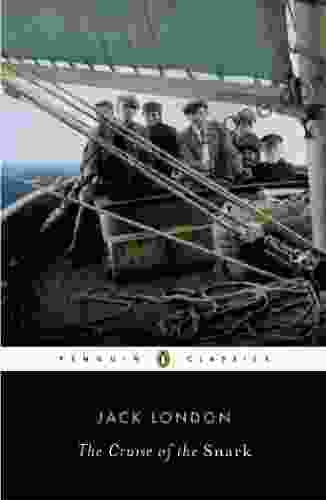On the Trail of the Tasmanian Tiger: A Journey into the Enigmatic World of Australia's Most Elusive Animal

In the annals of zoological history, few creatures have captured the imagination like the Tasmanian tiger. This enigmatic marsupial, with its distinctive stripes and lupine appearance, roamed the rugged landscapes of Tasmania until its presumed extinction in the early 20th century. Its elusive nature and mysterious disappearance have made it an enduring object of fascination, prompting countless expeditions and scientific studies. 4.2 out of 5 Known to the Tasmanian Aboriginal people as the "tigrine," the Tasmanian tiger possessed a unique combination of canine and feline traits. Its striking black stripes adorned a tawny coat, while its elongated canine teeth and powerful jaws hinted at its carnivorous nature. Measuring up to six feet in length, this formidable predator occupied the apex of Tasmania's food chain, preying on wallabies, kangaroos, and smaller mammals. Despite its widespread distribution throughout Tasmania, the Tasmanian tiger remained an elusive creature, its nocturnal habits and shy disposition keeping it largely out of sight. By the late 19th century, however, European colonizers had begun to encroach upon its territory, hunting the Tasmanian tiger for its fur and viewing it as a threat to livestock. As its habitat dwindled and human pressure intensified, the Tasmanian tiger's numbers plummeted. Despite its elusive nature, numerous eyewitness accounts provide tantalizing glimpses into the world of the Tasmanian tiger. These firsthand encounters offer invaluable insights into the behavior, appearance, and habitat of this enigmatic animal. One such account comes from George Augustus Robinson, a government official who encountered a Tasmanian tiger in 1830. Robinson described the animal as "the most ferocious looking animal I ever saw" and noted its distinctive stripes and powerful jaws. Another eyewitness, William Gould, provided a detailed description of the Tasmanian tiger's hunting technique, observing its stealthy movements and cunning use of camouflage. As the 19th century progressed, sightings of the Tasmanian tiger became increasingly rare. However, one of the most remarkable encounters occurred in 1938, when a farmer named Wilfred Batty claimed to have shot and killed a Tasmanian tiger on his property. Batty's account was met with skepticism, but subsequent investigations provided compelling evidence to support his claim. The Tasmanian tiger's presumed extinction in the early 20th century marked a profound loss for Australia's biodiversity. However, the mystery surrounding its disappearance continues to intrigue scientists and conservationists alike. In recent years, the "thylacine trail" has become a focus of intense research, as researchers seek to uncover the factors that led to the animal's demise. Genetic studies have played a crucial role in understanding the Tasmanian tiger's extinction. By analyzing DNA extracted from museum specimens, scientists have determined that the species experienced a rapid population decline in the early 20th century. This decline is likely linked to a combination of factors, including habitat loss, hunting, and disease. Researchers have also examined the impact of introduced species on the Tasmanian tiger. The of dingoes, red foxes, and cats into Tasmania may have competed with the Tasmanian tiger for prey and increased its vulnerability to disease. These introduced predators may have also contributed to the decline in the Tasmanian tiger's genetic diversity, making it more susceptible to extinction. Despite the Tasmanian tiger's presumed extinction, the legacy of this enigmatic creature continues to inspire hope and determination among conservationists. Advances in genetic technology have fueled speculation about the possibility of reviving the Tasmanian tiger through cloning or genetic engineering. In 1999, Australian scientists announced the successful cloning of a mouse using DNA from a frozen embryo. This groundbreaking achievement raised the possibility of using similar techniques to clone the Tasmanian tiger. However, the technical challenges and ethical implications of such an endeavor are significant. Other conservation efforts focus on preserving and expanding the habitat that the Tasmanian tiger once occupied. By protecting and restoring native ecosystems, scientists hope to create favorable conditions for the return of the Tasmanian tiger or other species that could fill its ecological niche. The Tasmanian tiger's extinction serves as a sobering reminder of the fragility of our planet's biodiversity. However, the enduring fascination with this enigmatic creature also inspires hope and resilience. The thylacine trail, with its ongoing scientific research and conservation efforts, is a testament to our collective determination to understand and protect our natural heritage. The Tasmanian tiger may be gone, but its legacy lives on. As we continue to unravel the mysteries surrounding its disappearance, we gain valuable insights into the intricate workings of nature and the importance of preserving our planet's biodiversity for generations to come. Unveiling the Enigma: The Tasmanian Tiger's Elusive Nature
Language : English File size : 2456 KB Text-to-Speech : Enabled Screen Reader : Supported Word Wise : Enabled Print length : 338 pages Eye to Eye with the Tasmanian Tiger: Witnessing the Enigma
The Thylacine Trail: Unraveling the Mysteries of Extinction
Echoes of the Tasmanian Tiger: Conservationists' Quest to Revive
The Enduring Legacy: A Symbol of Resilience and Hope
4.2 out of 5
| Language | : | English |
| File size | : | 2456 KB |
| Text-to-Speech | : | Enabled |
| Screen Reader | : | Supported |
| Word Wise | : | Enabled |
| Print length | : | 338 pages |
Do you want to contribute by writing guest posts on this blog?
Please contact us and send us a resume of previous articles that you have written.
 Best Book
Best Book Page Flip
Page Flip Bookshelf
Bookshelf Literary loom
Literary loom Chapter
Chapter Bookish
Bookish PageTurner
PageTurner Bibliophile
Bibliophile Story
Story Inkwell
Inkwell Bookworm
Bookworm Labyrinth
Labyrinth Plot Twist
Plot Twist Prose
Prose Paperback
Paperback Storyteller
Storyteller Sanctuary
Sanctuary Fiction
Fiction Reading
Reading Chronicle
Chronicle Read
Read Ramez Naam
Ramez Naam Jason Kander
Jason Kander Ruth Superhal
Ruth Superhal Susan Nagel
Susan Nagel Leonard Barkan
Leonard Barkan Veronica Li
Veronica Li Pilar M Herr
Pilar M Herr Jason Waguespack
Jason Waguespack John Potvin
John Potvin Ida B Wells
Ida B Wells Robert C Wood
Robert C Wood Jasper T Scott
Jasper T Scott John Preston
John Preston Stef Smulders
Stef Smulders Thefirstdefier
Thefirstdefier Butch Hartman
Butch Hartman Ian Condry
Ian Condry Lynn H Nicholas
Lynn H Nicholas Brandon Taylor
Brandon Taylor Carol Miller
Carol Miller Konchog Lhadrepa
Konchog Lhadrepa Shonda Buchanan
Shonda Buchanan Supersummary
Supersummary Laylah Roberts
Laylah Roberts James Monaco
James Monaco Marc Dipaolo
Marc Dipaolo Lisa Wixon
Lisa Wixon Una Mccormack
Una Mccormack James Barrington
James Barrington Quentin Tarantino
Quentin Tarantino Kira Salak
Kira Salak Languages World
Languages World Kaitlyn Dornbier
Kaitlyn Dornbier M D Cooper
M D Cooper Honey Phillips
Honey Phillips Howard W French
Howard W French J R Ward
J R Ward Laxuri Art
Laxuri Art James H Cobb
James H Cobb Mark Griffin
Mark Griffin Maria Adolfsson
Maria Adolfsson Jansen Art Studio
Jansen Art Studio J Nell
J Nell Shi Davidi
Shi Davidi Kathryn Warner
Kathryn Warner Jerry Saltz
Jerry Saltz Paul Carter
Paul Carter Lee J Ames
Lee J Ames Morris Rossabi
Morris Rossabi Michael Harkins
Michael Harkins Damon Tweedy
Damon Tweedy Marilyn Laura Bowman
Marilyn Laura Bowman Pierre Pochet
Pierre Pochet Jim Mccarthy
Jim Mccarthy Jim Forest
Jim Forest Martin Pistorius
Martin Pistorius David Railton
David Railton Ben Shahn
Ben Shahn Ian Blakemore
Ian Blakemore Phil Chan
Phil Chan Stephen Kurkjian
Stephen Kurkjian Patti Mollica
Patti Mollica Lisa Kleypas
Lisa Kleypas Helena Reckitt
Helena Reckitt James Patterson
James Patterson Baby Professor
Baby Professor Loet Velmans
Loet Velmans Joshua Glenn
Joshua Glenn Stephen Smith
Stephen Smith Justin M Monehen
Justin M Monehen Andrew Loomis
Andrew Loomis Paul Gauguin
Paul Gauguin Jeremy Black
Jeremy Black Jean Johnson
Jean Johnson Steve Berry
Steve Berry Noa Baum
Noa Baum Isak Dinesen
Isak Dinesen Steve Spill
Steve Spill Jeffrey B Perry
Jeffrey B Perry W Kamau Bell
W Kamau Bell Michael Kluckner
Michael Kluckner Jason L Riley
Jason L Riley Hattie Gossett
Hattie Gossett Nancy Mitford
Nancy Mitford Lauren Francis Sharma
Lauren Francis Sharma J J Mcavoy
J J Mcavoy Laura Slater
Laura Slater Kyle Anthony
Kyle Anthony John Guy
John Guy Michael Peter Bolus
Michael Peter Bolus Chris Kennedy
Chris Kennedy Judy Gay Matthews
Judy Gay Matthews J D Sullivan
J D Sullivan Hilary Bradt
Hilary Bradt Juliette Aristides
Juliette Aristides Marisa Renee Lee
Marisa Renee Lee Nobuko Miyamoto
Nobuko Miyamoto Stephen T Moskey
Stephen T Moskey Deborah Frisch
Deborah Frisch D K Holmberg
D K Holmberg Mike Brooks
Mike Brooks Hillary S Webb
Hillary S Webb Shirtaloon
Shirtaloon Marjorie Agosin
Marjorie Agosin Italo Calvino
Italo Calvino Suhas Mantri
Suhas Mantri James Huntington
James Huntington Pete Salgado
Pete Salgado Thomas J Campanella
Thomas J Campanella Jeff Blumenfeld
Jeff Blumenfeld P J Thorndyke
P J Thorndyke Rudolf Koch
Rudolf Koch Kent Blansett
Kent Blansett Patricia Sands
Patricia Sands Tanav Patkar
Tanav Patkar John Kane
John Kane Kiyoshi Takahashi
Kiyoshi Takahashi Sarah Simon
Sarah Simon Vikki Haffenden
Vikki Haffenden Jeneane Lunn
Jeneane Lunn Roy John
Roy John Joyce Yee
Joyce Yee Valerie Wilson Wesley
Valerie Wilson Wesley Johanna Lindsey
Johanna Lindsey Jerry Vermilye
Jerry Vermilye James Claflin
James Claflin Tasha Black
Tasha Black Uri Mcmillan
Uri Mcmillan Michael Dooley
Michael Dooley Melanie Clarke
Melanie Clarke Luis J Rodriguez
Luis J Rodriguez David Lynch
David Lynch Tyanna
Tyanna Suzanne Brooker
Suzanne Brooker Ruth Behar
Ruth Behar James Joseph
James Joseph John Berger
John Berger Stephen Orr
Stephen Orr Marcus Samuelsson
Marcus Samuelsson Melissa Fehr
Melissa Fehr Keith Osborn
Keith Osborn John R Kemp
John R Kemp William Gibson
William Gibson Jodi Ellen Malpas
Jodi Ellen Malpas Ross Buzzell
Ross Buzzell Jonathan Drori
Jonathan Drori R Brady Frost
R Brady Frost Martina M Lanier
Martina M Lanier Michael Hone
Michael Hone Mauricio Savarese
Mauricio Savarese John Clifford
John Clifford Yvonne Claypole
Yvonne Claypole Ted Chiang
Ted Chiang Janet Adler
Janet Adler Jonas Peters
Jonas Peters Michael Curtis
Michael Curtis Joscha Remus
Joscha Remus Ilana Kurshan
Ilana Kurshan Kia Jones
Kia Jones Will Castro
Will Castro Rick Scott
Rick Scott Christina Sharpe
Christina Sharpe Yuta Aoki
Yuta Aoki Joe Fig
Joe Fig Jazz E
Jazz E Leslie Marmon Silko
Leslie Marmon Silko Julian Curry
Julian Curry Katrina Rodabaugh
Katrina Rodabaugh John Armstrong
John Armstrong Karen Homer
Karen Homer Maitland Mcdonagh
Maitland Mcdonagh Obaidur Rahaman
Obaidur Rahaman Lisa Edwards
Lisa Edwards Neal Stephenson
Neal Stephenson Jami Gigot
Jami Gigot Kevin Hart
Kevin Hart Reid Mitenbuler
Reid Mitenbuler Robert B Pippin
Robert B Pippin Larry Loftis
Larry Loftis Paul Bonnet
Paul Bonnet Janet Carlson
Janet Carlson Mary Antin
Mary Antin Brian Trent
Brian Trent Jo Goodman
Jo Goodman Sheila Simkin
Sheila Simkin Karin Evans
Karin Evans Brad Goreski
Brad Goreski Wayne J Lutz
Wayne J Lutz Lawrence Durrell
Lawrence Durrell Jasmine Tritten Llc
Jasmine Tritten Llc Terrance Zepke
Terrance Zepke Tessa Fontaine
Tessa Fontaine Eva Van Loon
Eva Van Loon Jeff Mellem
Jeff Mellem Susie Hodge
Susie Hodge Richard R Brettell
Richard R Brettell James Graham Baker
James Graham Baker Marcello Di Cintio
Marcello Di Cintio Insight Guides
Insight Guides K Webster
K Webster Seth Rain
Seth Rain Renae Anderson
Renae Anderson John Scotney
John Scotney Sylvia Townsend Warner
Sylvia Townsend Warner Sonya Lajuan
Sonya Lajuan Karpov Kinrade
Karpov Kinrade Jane Goodall
Jane Goodall Karen Lindeman
Karen Lindeman Parnaz Foroutan
Parnaz Foroutan John Man
John Man Tricia Cornell
Tricia Cornell Joe Posnanski
Joe Posnanski Paul Arthur Berkman
Paul Arthur Berkman Tim Fisher
Tim Fisher Jacquelyn Descanso
Jacquelyn Descanso Rosie Rivera
Rosie Rivera J L Heilbron
J L Heilbron Johno Ellison
Johno Ellison Nicholas Sammond
Nicholas Sammond Melissa Washburn
Melissa Washburn Stephanie Nicole Norris
Stephanie Nicole Norris Nancy Ditomaso
Nancy Ditomaso Ilene Strizver
Ilene Strizver Lina Acevedo
Lina Acevedo Jean Hugard
Jean Hugard Jeff Howard
Jeff Howard Jeff Hobbs
Jeff Hobbs Elinor Lipman
Elinor Lipman Rolf Giesen
Rolf Giesen Melissa Maerz
Melissa Maerz Jonathan Jones
Jonathan Jones Laureen Nussbaum
Laureen Nussbaum James Fairbairn
James Fairbairn James Halliday
James Halliday Kathryn Stockett
Kathryn Stockett Judy Friesem
Judy Friesem Mary Turzillo
Mary Turzillo Shirish Deshpande
Shirish Deshpande Ulrike Fuchs
Ulrike Fuchs Mary Heron Dyer
Mary Heron Dyer Tade Thompson
Tade Thompson Slim Randles
Slim Randles Julia Zarankin
Julia Zarankin Jack London
Jack London Interweave Editors
Interweave Editors John Hindmarsh
John Hindmarsh Kaoru Nonomura
Kaoru Nonomura Bonny Snowdon
Bonny Snowdon Martin Gilbert
Martin Gilbert Roger Ebert
Roger Ebert Lorna Jane Harvey
Lorna Jane Harvey Bruce Hanington
Bruce Hanington John Lawson
John Lawson V F Gutierrez
V F Gutierrez James Anthony
James Anthony Sarah Jackson
Sarah Jackson James Grant
James Grant John Szpunar
John Szpunar Tom Dunkel
Tom Dunkel Xueting Christine Ni
Xueting Christine Ni Maeve Binchy
Maeve Binchy Mimi Thorisson
Mimi Thorisson Ivy Mix
Ivy Mix Stuart Woods
Stuart Woods Pat Kramer
Pat Kramer Linda Lael Miller
Linda Lael Miller Jeanine Cornillot
Jeanine Cornillot Washington Irving
Washington Irving Mike Downs
Mike Downs Joy Avery
Joy Avery Steve Parker
Steve Parker Steve Stevenson
Steve Stevenson Jim Hutchinson
Jim Hutchinson Jessica Alba
Jessica Alba Robert Mccammon
Robert Mccammon Jessica Gadziala
Jessica Gadziala Ariel Sabar
Ariel Sabar John C Rigdon
John C Rigdon Laura Beth Love
Laura Beth Love James Lawson
James Lawson Kevin Budelmann
Kevin Budelmann Mark Willenbrink
Mark Willenbrink Harold Speed
Harold Speed Mira Schor
Mira Schor Vaughn Patillo
Vaughn Patillo Zogarth
Zogarth Jason Kingsley
Jason Kingsley June Mcleod
June Mcleod James Hunter
James Hunter James Hall
James Hall Jan Cohen Cruz
Jan Cohen Cruz Ron Collins
Ron Collins Henry Hemming
Henry Hemming James R Rush
James R Rush Henri Piquer
Henri Piquer Thomas Weisser
Thomas Weisser Ran Walker
Ran Walker Joan Mellen
Joan Mellen Steve Charney
Steve Charney Jonathan Dehart
Jonathan Dehart Camilla Townsend
Camilla Townsend Phoebe Hoban
Phoebe Hoban Laurie Tom
Laurie Tom Danielle Joseph
Danielle Joseph J D Robb
J D Robb Darby Penney
Darby Penney Philip Gwynne Jones
Philip Gwynne Jones Travis Jeppesen
Travis Jeppesen Sanford Meisner
Sanford Meisner Michael Head
Michael Head Lauren Bastide
Lauren Bastide S J A Turney
S J A Turney Jean M Roberts
Jean M Roberts Jason Fry
Jason Fry Robert D Young
Robert D Young Michelle Rial
Michelle Rial Mary Taylor Simeti
Mary Taylor Simeti Thomas Lamosse
Thomas Lamosse Jessica Shorstein
Jessica Shorstein Nat Segnit
Nat Segnit Jacquie Abram
Jacquie Abram Julia Fowler
Julia Fowler Jeff Vandermeer
Jeff Vandermeer Phillip Barlag
Phillip Barlag Louis L Amour
Louis L Amour Kate Rawles
Kate Rawles Roger Zelazny
Roger Zelazny Stefhen F D Bryan
Stefhen F D Bryan Patrick Dennis
Patrick Dennis E H Raskin
E H Raskin Jack Hitt
Jack Hitt Samantha Irby
Samantha Irby Lali Duperti
Lali Duperti Isabel Santos
Isabel Santos Jeff Shaara
Jeff Shaara Jennifer Lynne Matthews Fairbanks
Jennifer Lynne Matthews Fairbanks Irene Latham
Irene Latham Richard Blanco
Richard Blanco Jack Campbell
Jack Campbell Kat Varano
Kat Varano Sam Pivnik
Sam Pivnik William Gray
William Gray Jay Brian Schoonmaker
Jay Brian Schoonmaker Mary Anne Dorward
Mary Anne Dorward Susan Zwerman
Susan Zwerman Kevin Ikenberry
Kevin Ikenberry Charles E Gannon
Charles E Gannon Justin Sloan
Justin Sloan Isaac Asimov
Isaac Asimov James E Seaver
James E Seaver Nelson George
Nelson George Nancy Marie Mithlo
Nancy Marie Mithlo Ava Archer
Ava Archer Jana K Lipman
Jana K Lipman Joe Haldeman
Joe Haldeman Mariam V Lawal
Mariam V Lawal James Robert Parish
James Robert Parish Victoria Charles
Victoria Charles Henry Fraser
Henry Fraser Matthew Israel
Matthew Israel Kandra Churchwell
Kandra Churchwell Eric Vall
Eric Vall James Swallow
James Swallow Annette Gisby
Annette Gisby Jennifer Campbell
Jennifer Campbell Larry Niven
Larry Niven Jose Vadi
Jose Vadi Rob Wareing
Rob Wareing Mitchell Albala
Mitchell Albala Vaneetha Risner
Vaneetha Risner Viet Thanh Nguyen
Viet Thanh Nguyen Tom Glover
Tom Glover Martin Ursell
Martin Ursell Jan Wahl
Jan Wahl Kristal Wick
Kristal Wick Monica Byrne
Monica Byrne Jason Cranford Teague
Jason Cranford Teague Ishmael Beah
Ishmael Beah Marc Foster
Marc Foster Zanna Goldhawk
Zanna Goldhawk Philip Gourevitch
Philip Gourevitch Katherine Arden
Katherine Arden Patrick Dimarchi
Patrick Dimarchi Willie Mays
Willie Mays Theodore Menten
Theodore Menten Kai Kupferschmidt
Kai Kupferschmidt Reymundo Sanchez
Reymundo Sanchez Maureen T Corrigan
Maureen T Corrigan Keith Fenwick
Keith Fenwick Ping Fu
Ping Fu Kim Dana Kupperman
Kim Dana Kupperman Stephen Hunter
Stephen Hunter Robyn Carr
Robyn Carr Regine Abel
Regine Abel Shawn Levy
Shawn Levy Henry B Culver
Henry B Culver Tina Turner
Tina Turner Weston Ochse
Weston Ochse Richard Lecocq
Richard Lecocq Roxanne Modafferi
Roxanne Modafferi Travis Rieder
Travis Rieder Isabel Wroth
Isabel Wroth Jaime Lowe
Jaime Lowe Roy Liebman
Roy Liebman Margaret Hermes
Margaret Hermes Martha Maccallum
Martha Maccallum Vicky Gray
Vicky Gray Jason Cochran
Jason Cochran Sherelle Green
Sherelle Green James J Downes
James J Downes Jeff Rovin
Jeff Rovin Manny Serrato
Manny Serrato Megan Mackie
Megan Mackie Manoah Bowman
Manoah Bowman Carlyn Beccia
Carlyn Beccia Bianca Del Rio
Bianca Del Rio Meredith Talusan
Meredith Talusan Second Edition Kindle Edition
Second Edition Kindle Edition Lally Brown
Lally Brown R G Richardson
R G Richardson Iris Bolling
Iris Bolling Kimberly Wilkes
Kimberly Wilkes Nolan Clark
Nolan Clark Mary Jordan
Mary Jordan Ryan Leslie
Ryan Leslie J T Nicholas
J T Nicholas Tom Segev
Tom Segev J Foord
J Foord Susan Kesler Simpson
Susan Kesler Simpson Steven W Brallier
Steven W Brallier Mel Dau
Mel Dau Hourly History
Hourly History Lizzie Damilola Blackburn
Lizzie Damilola Blackburn Kay Doherty Bennett
Kay Doherty Bennett Jim Marrs
Jim Marrs Patti M Hall
Patti M Hall Sandra M Z Armstrong
Sandra M Z Armstrong Peter Watts
Peter Watts Taylor Moore
Taylor Moore Robin Hobb
Robin Hobb Kindle Edition
Kindle Edition Todd Wassel
Todd Wassel J Nichole
J Nichole Mark Rothko
Mark Rothko Susan Cross
Susan Cross Merry White
Merry White Marjorie R Williams
Marjorie R Williams M William Phelps
M William Phelps Marian Lindberg
Marian Lindberg Michael Moorcock
Michael Moorcock Tim Jeal
Tim Jeal John Wilkinson
John Wilkinson Rani St Pucchi
Rani St Pucchi Jesmyn Ward
Jesmyn Ward Jacqueline Winspear
Jacqueline Winspear Alec Potrero
Alec Potrero Joshua T Calvert
Joshua T Calvert Hilary Wilson
Hilary Wilson T O Smith
T O Smith Plutarch
Plutarch Peter F Stevens
Peter F Stevens Kris Schnee
Kris Schnee Bruce Cook
Bruce Cook J A Hinds
J A Hinds Kate Flint
Kate Flint Tiffany Haddish
Tiffany Haddish Karen Hull
Karen Hull Jodi Thomas
Jodi Thomas Matt Zoller Seitz
Matt Zoller Seitz Steve Kaffen
Steve Kaffen Ian Littlewood
Ian Littlewood David Menconi
David Menconi Ryan Dunlavey
Ryan Dunlavey Karen Cheng
Karen Cheng Amanda Arneill
Amanda Arneill Ramie Targoff
Ramie Targoff Fran Macilvey
Fran Macilvey Julia Rothman
Julia Rothman Sally R Ball
Sally R Ball Natalie Livingstone
Natalie Livingstone Susan Hable
Susan Hable Vincent Miller
Vincent Miller John Pike
John Pike E M Hardy
E M Hardy Tarry Lindquist
Tarry Lindquist Nora Ephron
Nora Ephron Jelani Cobb
Jelani Cobb Ronald Bergan
Ronald Bergan James Baldwin
James Baldwin Ja Huss
Ja Huss Zuri Day
Zuri Day Karen Attman
Karen Attman Marcy Conway
Marcy Conway Sonia Sotomayor
Sonia Sotomayor Bob Wilbanks
Bob Wilbanks John Joseph Adams
John Joseph Adams Edoardo Albert
Edoardo Albert Marty Sklar
Marty Sklar Jennifer L Scott
Jennifer L Scott Joe Garcia
Joe Garcia David Sherwin
David Sherwin Joshua Dalzelle
Joshua Dalzelle Jon Steel
Jon Steel Vera Nazarian
Vera Nazarian Jeanne St James
Jeanne St James Sianne Ngai
Sianne Ngai C J Cherryh
C J Cherryh Motorcycle Vagabonds
Motorcycle Vagabonds Dr Lucie Rivera
Dr Lucie Rivera Sean Wallace
Sean Wallace Jeffery J Dyas
Jeffery J Dyas Kim Fairley
Kim Fairley Traci Bunkers
Traci Bunkers Scott Pratt
Scott Pratt Jean Paul Labourdette
Jean Paul Labourdette Steve Hulett
Steve Hulett Hiroko Yoda
Hiroko Yoda Iain Rob Wright
Iain Rob Wright Slim Dusty
Slim Dusty Jd Chandler
Jd Chandler Stefan Kottwitz
Stefan Kottwitz Tom Bancroft
Tom Bancroft William L Iggiagruk Hensley
William L Iggiagruk Hensley Tanya Tagaq
Tanya Tagaq Russell Smith
Russell Smith Ryan Jennings
Ryan Jennings Lonely Planet
Lonely Planet Marion Zimmer Bradley
Marion Zimmer Bradley Katharine Branning
Katharine Branning Kristen Faber
Kristen Faber E C Godhand
E C Godhand Jimmy O Yang
Jimmy O Yang Zia Knight
Zia Knight K C Mills
K C Mills Linda Langner
Linda Langner Henry David Thoreau
Henry David Thoreau Nana Kwame Adjei Brenyah
Nana Kwame Adjei Brenyah Roland Kelts
Roland Kelts Paula M Block
Paula M Block Kresley Cole
Kresley Cole William Reyland
William Reyland P Scott Cunningham
P Scott Cunningham Julia L Foulkes
Julia L Foulkes John Tateishi
John Tateishi Jack C Ramsay
Jack C Ramsay Tim Testu
Tim Testu Northrop Davis
Northrop Davis Dorit Elisha
Dorit Elisha Steven Konkoly
Steven Konkoly Jean Muenchrath
Jean Muenchrath Karen Stocker
Karen Stocker Kenneth French
Kenneth French Steph The Hammer Hammerman
Steph The Hammer Hammerman Theo Farrington
Theo Farrington Michael Roberts
Michael Roberts Dean Dalton
Dean Dalton Waheed Arian
Waheed Arian Victoria Lewis
Victoria Lewis Shea Ernshaw
Shea Ernshaw Arthur Miller
Arthur Miller Misty Copeland
Misty Copeland Robert Rosen
Robert Rosen Peter Parr
Peter Parr Tom Santopietro
Tom Santopietro Volta Voloshin Smith
Volta Voloshin Smith Stephen L Carter
Stephen L Carter Zack Meisel
Zack Meisel Walter Mosley
Walter Mosley Tom Swimm
Tom Swimm Norman Eisen
Norman Eisen Yvonne Moore
Yvonne Moore Niqua Nakell
Niqua Nakell Sarah Vowell
Sarah Vowell
Light bulbAdvertise smarter! Our strategic ad space ensures maximum exposure. Reserve your spot today!
 Wesley ReedFollow ·19.7k
Wesley ReedFollow ·19.7k Blake BellFollow ·15.1k
Blake BellFollow ·15.1k Felix CarterFollow ·10.5k
Felix CarterFollow ·10.5k Bryson HayesFollow ·11.1k
Bryson HayesFollow ·11.1k Greg CoxFollow ·8.6k
Greg CoxFollow ·8.6k Arthur C. ClarkeFollow ·16.8k
Arthur C. ClarkeFollow ·16.8k Matthew WardFollow ·14.1k
Matthew WardFollow ·14.1k Brennan BlairFollow ·13.1k
Brennan BlairFollow ·13.1k

 Holden Bell
Holden BellFriend Indeed One: A Comprehensive Guide to the Essential...
In the tapestry of human existence,...

 Gustavo Cox
Gustavo CoxBend Not Break: Life in Two Worlds
In the tapestry of human...

 Andy Hayes
Andy HayesDiscover How To Create Stunning Images With Useful And...
Drawing is a great way to...

 Aleksandr Pushkin
Aleksandr PushkinThe Rise and Fall of Latin Queen: An Exploration into the...
Latin music has captivated audiences...

 Ira Cox
Ira CoxUnveiling the Soul of Desert Painting: A Journey into the...
In the vast...
4.2 out of 5
| Language | : | English |
| File size | : | 2456 KB |
| Text-to-Speech | : | Enabled |
| Screen Reader | : | Supported |
| Word Wise | : | Enabled |
| Print length | : | 338 pages |














